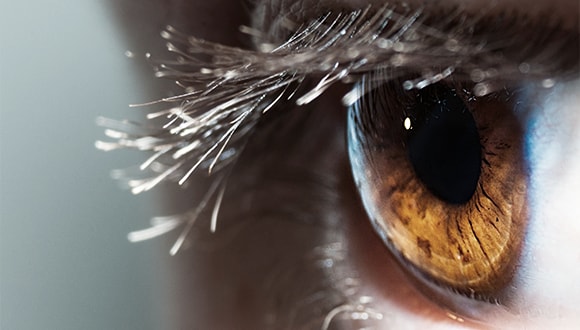Macular degeneration: what you need to know
Find out if you’re at risk of being affected by this eye disease, how it’s diagnosed and how you can lower your risk factors.
Words by Lucy E. Cousins
August 2017
There are more than 380,000 Aussies who are classified as legally blind, and macular degeneration is responsible for 50% of those cases. It’s the leading cause of blindness in Australia and its impact can vary in speed and severity; but the most common form of it usually affects people aged 50+.

What is macular degeneration?
Macular degeneration refers to several diseases that cause either blurred vision or vision loss to the central vision, affecting reading, driving and other activities that require focus on things directly in front of you. As a rule, macular degeneration doesn’t cause total blindness, as the peripheral vision (outside of your central gaze) generally remains intact.
The disease attacks the layer of cells under the retina (tissue at the back of the eye), leaving patients with distortion at the centre of their field of vision. There are two types of macular degeneration: atrophic, known as “dry”, and neovascular, known as “wet”.
With dry macular degeneration, the centre of the retina is damaged and the progression of the disease is more gradual, but this form can become “wet” macular degeneration over time. Wet macular degeneration results in blood and fluids leaking into the retina, and vision can be affected very quickly, sometimes overnight.
The symptoms of macular degeneration
Macular degeneration is also known as “age-related macular degeneration”, as in most cases advancing age is a common risk factor, as is family history of the condition and a history of smoking. The disease is classified into three phases – early, intermediate and late – and if detected early, you can slow the progression of it through lifestyle changes, such as quitting smoking or eating a healthy diet.
Common symptoms to look out for are:
- dark patches in your vision
- difficulty recognising familiar faces
- straight lines appearing crooked
- a sensitivity to light
- difficulty reading.
Getting a diagnosis
Some of the earliest signs can only be detected by an optometrist who can check the back of your eye for by taking a digital retinal image. Eligible HCF members can access fully covered retinal images through our 100% back extras program.
If you’re diagnosed with macular degeneration, you may need regular eye check ups or be referred to a specialist (ophthalmologist) for further testing.
Treating macular degeneration
Both forms of macular degeneration are incurable, but there are treatments that can slow the pace of wet macular degeneration and in some cases, even reduce vision loss from the disease.
The main treatments target a protein called Vascular Endothelial growth factor (VEGF), which is responsible for the growth of new abnormal blood vessels in the retina. Anti-VEGF drugs are injected into the eye and can prevent new blood vessel growth and further vision loss.
No treatments exist at this stage for dry macular degeneration, but there is research to suggest that one might be on the horizon. A series of trials run by the Centre for Eye Research Australia has reported early promising results. The trials are exploring the use of regular injections similar in nature to the treatment for wet macular degeneration.
There has also been early research by the National Eye Institute in the US into the use of high-dose vitamin supplementation. Combinations of vitamins C and E, beta carotene and zinc are thought to delay the progression of age-related macular degeneration and vision loss, but this is unproven and any treatment like this should be under the guidance of your doctor.
Reducing your risk
While it’s generally agreed that healthy eating can help reduce the risk of macular degeneration, there is conflicting scientific evidence as to what that healthy eating looks like in order to prevent it.
The Macular Degeneration Foundation recommends eating fish two to three times a week, low-glycaemic index carbohydrates (such as beans, grainy bread and porridge), dark leafy greens and fresh fruit daily, plus a handful of nuts each week. The foundation also advises speaking to your doctor about eating for better eye health.
Related articles
Eye health alerts
Eyes can give doctors valuable insights into a range of potentially dangerous health conditions.
Diabetes and your eye health
With an increasing number of Australians diagnosed with diabetes, poor eye health and potential vision loss is becoming an issue for more people.
Arthritis: Don’t ignore aches and pains
Arthritis often starts with joint pain and stiffness so don’t ignore mystery pangs, particularly in your hands, hips or knees.